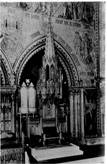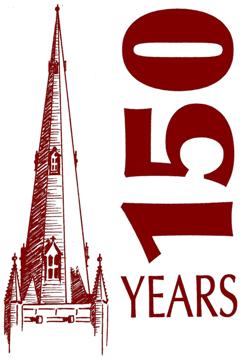Low population density in the northwest meant that Protestantism took hold here less firmly than elsewhere in England. Known as 'recusants', local Catholics of the early modern period were regularly fined and sometimes much more severely punished for retaining their faith. By the early eighteenth century Lancaster's Catholic community worshipped in a makeshift chapel on St Leonard's gate (opposite the Grand Theatre).
In 1791 Parliament passed a law allowing Catholics to build churches and almost immediately Dr John Rigby, the rector of the Lancaster Catholic Mission, set about building a larger chapel for his congregation. The cornerstone of the new building, on the north side of Dalton Square, was laid on 13th March 1798; a year later the chapel was consecrated and by 1801 the interior decoration of the chapel and the priest's house next door were complete. The Dalton Square Mission is now known as Palatine Hall.
Click
here to continue reading - the next page covers the building of the new church.


